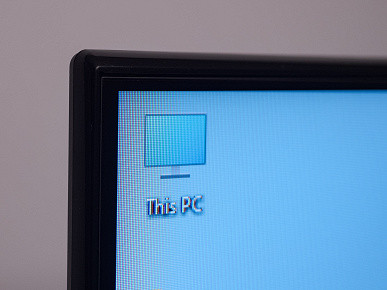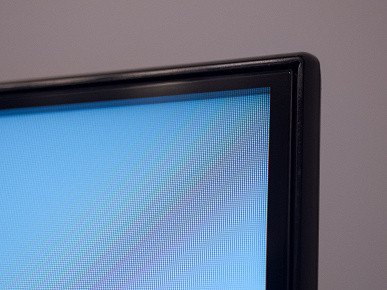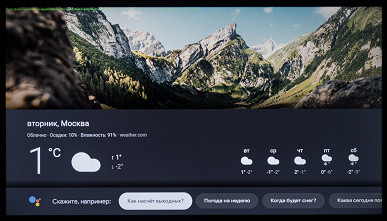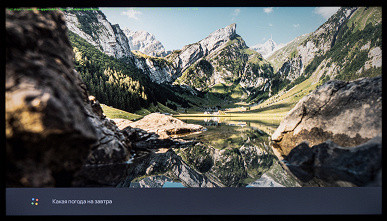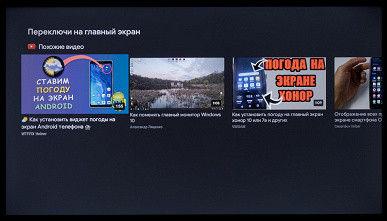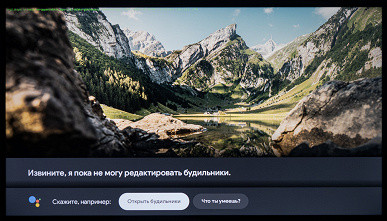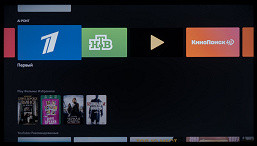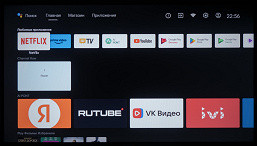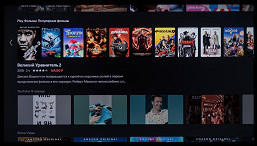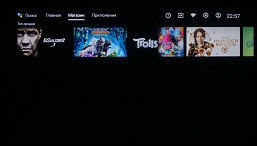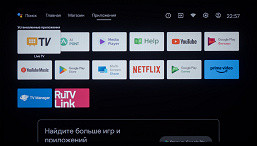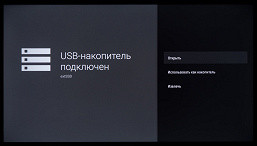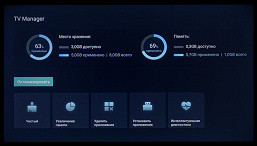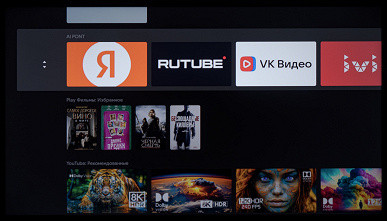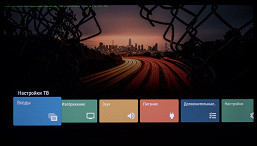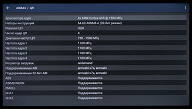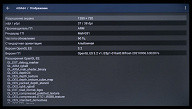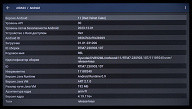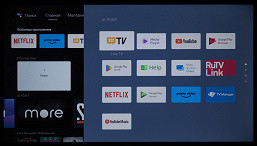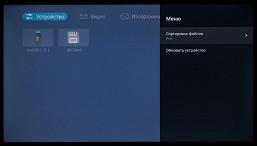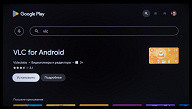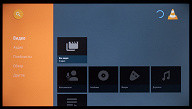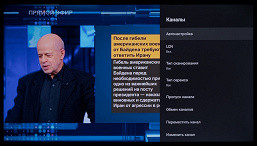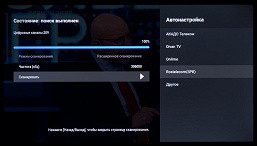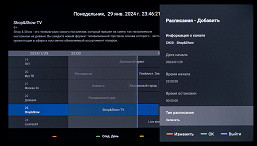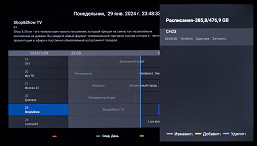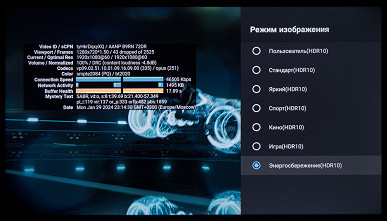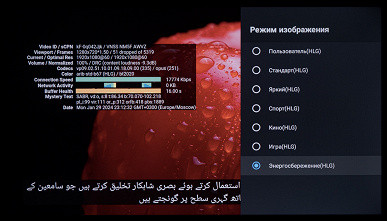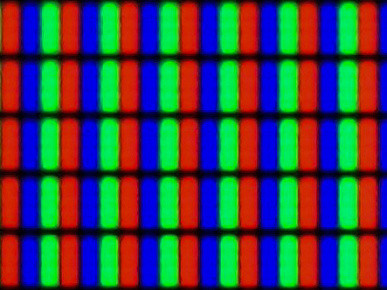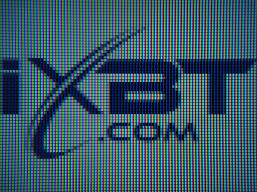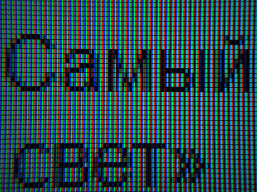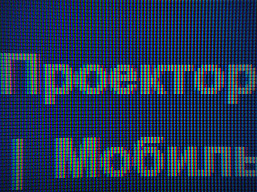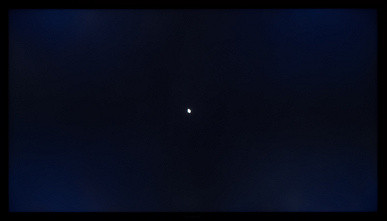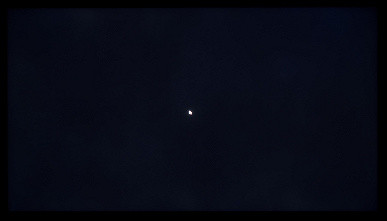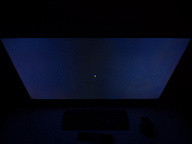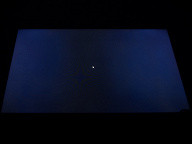In an era where store shelves are filled with countless 4K UHD TV options, there are still consumers who don't see the point in paying extra for features they don't need. If the screen size of the new TV does not exceed 45-48 inches, and it is intended to be used mainly as a TV at a distance of a couple of meters from the viewer, then the Full HD resolution (1920x1080) will be more than sufficient and will save significant money.
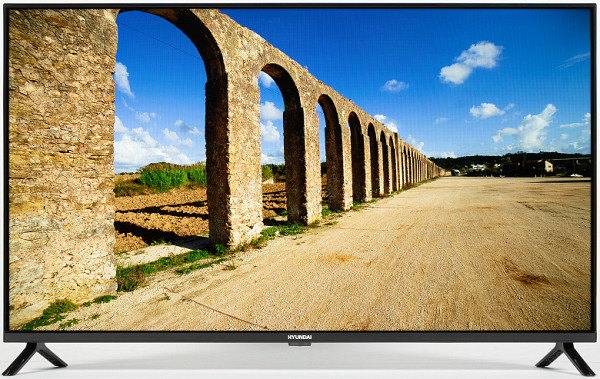
Fortunately, many manufacturers still share this point of view and offer corresponding models. In this review, we will look at the 40-inch Hyundai H-LED40BS5002 TV with Full HD resolution and the Android TV operating system based on Android 11, equipped with a *VA-like matrix that provides deep black shades.
Specifications, delivery set
| Screen | |
|---|---|
| Screen type | *VA-type LCD panel with Edge LED backlight |
| Diagonal | 40 inches / 102 cm |
| Permission | 1920x1080 (16:9) |
| Panel color depth | 8 bits (emulates up to 10 bits using FRC) |
| Brightness | 280 cd/m² (maximum) |
| Contrast | 5000:1 (typical) |
| Viewing Angles | 178° (horizontal) and 178° (vertical) |
| Response time | 9.5 ms |
| Interfaces |
|
| Other characteristics | |
| Acoustic system | stereo speakers, 2×8 W |
| Peculiarities |
|
| Dimensions (W×H×D) | 898×514×86 mm without stand |
| Weight | 7.2 kg with stand 7.1 kg without stand |
| Power consumption | 74 W (nominal), 0.5 W in standby mode |
| Supply voltage | 100—240 V, 50/60 Hz |
| Delivery set (needs to be checked before purchasing) |
|
Packaging and appearance
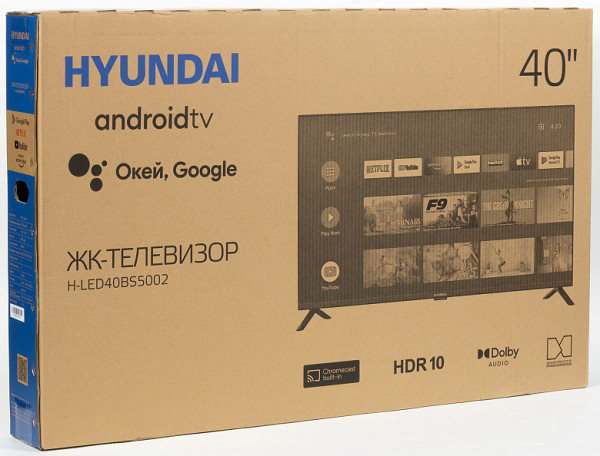
The TV and all accessories are packaged in a simple corrugated cardboard box with minimal design. The main technical characteristics of the model are indicated on both sides of the package. For ease of carrying, the box has side handles.
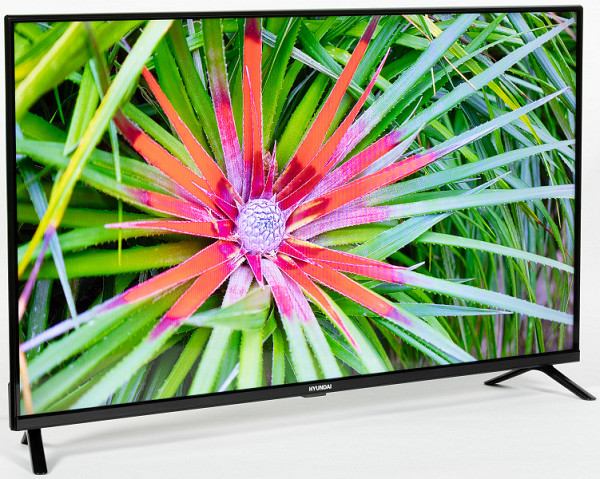
The TV's design is modest and modern, with a «bezel-less» style based on black or a similar color. The screen is frameless on three sides, having only a thin plastic bezel, and at the bottom of the frame there is a plastic insert with the brand logo in the center. The screen panel is slightly recessed into the body, creating a feeling of lightness and smoothness of the image, as if it were floating in the air.
The surface of the matrix is almost mirror-smooth with a semi-matte coating, which is an anti-reflective film applied to the surface of the LCD panel. However, the anti-glare properties of the screen are weak, so it is recommended to avoid bright external lighting and direct sunlight on the screen.
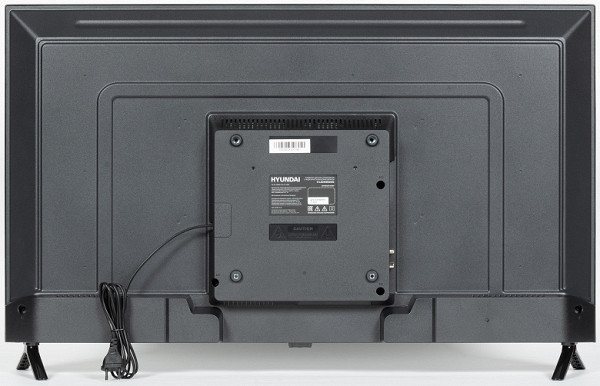
The back of the TV features a neat design. The top of the back panel is made from a thin sheet of steel with a durable matte black finish. It covers the screen from the top and sides, forming a frame. The lower part of the rear panel has a protruding casing made of black plastic with a matte, slightly rough surface. The interface connectors are located in two open niches.
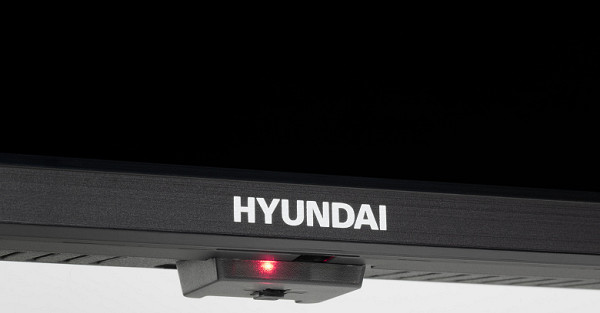
At the bottom of the central end there is a transparent light guide cover that covers the IR receiver of the remote control and the status indicator.
In standby mode, the indicator is softly illuminated in red, while in operating mode it remains invisible. The only button on the overlay appears to be designed to turn on the TV, put it into standby mode (short press) or deep sleep mode (long press).

The standard Hyundai TV stand consists of two durable plastic legs in the shape of the letter Y, which are attached to the bottom end with screws. The surface of the legs is covered with a glossy black finish. Despite their light weight, they securely hold the large TV frame with a subtle tilt back, without causing additional vibrations. In general, the design has sufficient rigidity. The distance between the legs is 885 mm.

An alternative way to install a TV without using a standard stand is to mount it using VESA 200x200mm mounting holes.

An alternative way to install a TV without using a standard stand is to mount it using VESA 200x200mm mounting holes.
Switching
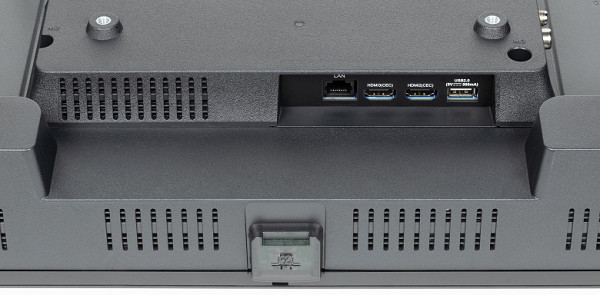
The table with characteristics at the beginning of the article gives an idea of the communication capabilities of the TV.

Most of the connectors on the TV are standard, full-size and located quite freely. The power cable is non-removable and has a length of 1.5 m.
Among the advantages of the TV, it is worth noting the presence of three HDMI ports (all three are version 1.4, which is enough to effectively use all the functions of the model, and HDMI1 also has ARC support) and two USB 2.0 ports with a maximum current of up to 0.5 A. This ensures trouble-free operation with most low-power USB drives and SSDs. In addition, both USB ports can be used to connect various peripheral devices (keyboards, mice, USB receivers) with appropriate power requirements.

The RJ-45 connector for a wired network connection is conveniently located, but most users will probably prefer to use the built-in Wi-Fi adapter of the Wi-Fi 5 standard (802.11a/b/g/n/ac, 2.4 and 5 GHz).
When connecting to a deployed 5 GHz network based on the Keenetic Giga router, with a Hyundai TV located at a distance of 5 meters and separated from the router by a monolithic wall, a connection speed of 650 Mbit/s was observed (connection type: 11ac/k, 2x2 80 MHz). This is an excellent indicator.
The TV also supports HDMI control, the HDMI CEC feature. In our case, it successfully interacted with the Xiaomi Mi Box S TV set-top box and its remote control. It is also possible to use reverse control, when the TV remote control activates, controls and turns off the set-top box itself.
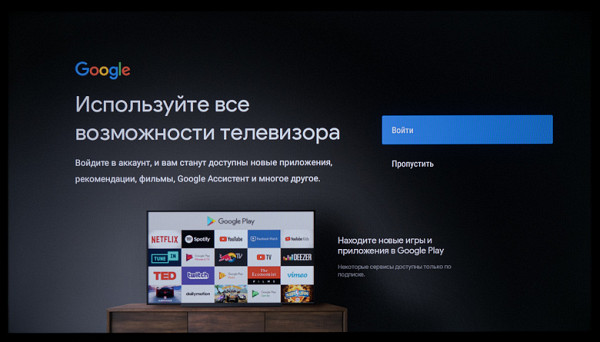
In Miracast mode, you can transfer image and sound from a mobile device to your TV via Wi-Fi. When using a fairly powerful device (for example, Poco F5), the video output quality can be satisfactory, but the frame rate usually does not exceed 30 fps, and the output lag is noticeable.

The TV also supports the official Google Chromecast feature, which works without any problems. Please note: To use both features, devices must be connected to the same wireless network.
Remote control and other control systems
The control panel is made of matte black plastic. The main buttons are made of a rubber-like material, with the exception of the center [OK] button, which is made of hard plastic with a silver finish. The inscriptions on the buttons are contrasting and quite large. However, some of the auxiliary buttons on the back of the remote are very small, as are their labels.
Unfortunately, the remote has buttons for quickly launching a number of applications, which, in fact, only take up space and can sometimes lead to the accidental launch of unsupported programs in the Russian Federation (for example, Netflix).
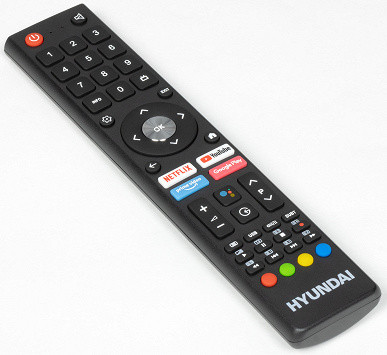

The remote control is a hybrid: it can operate via both infrared (IR) and Bluetooth connections. When working via IR, the remote control is active until paired with the TV or when the TV is in standby or sleep mode. In other cases, commands are transmitted via Bluetooth. On the front of the remote control, next to the indicator, there is a hole for a microphone.
The Google voice assistant is launched by pressing the button with colored circles. There is no need to hold down the button to activate voice input; When the microphone is turned on, the red indicator on the remote control lights up. Additionally, the voice assistant can be launched from the home page or using the multimedia search button on the numeric keypad. It can help you find content available on a range of programs and answer questions, including weather information.
Some programs have a voice input function. There is also basic integration with the TV itself: you can use your voice to adjust the volume, turn the sound on or off, open the settings menu, select the desired input and launch programs by their names (provided they are pronounced correctly). You can also display the TV program guide and switch to a TV channel by its name.
If words or phrases are not recognized as commands, a search is performed, the results of which may include entertainment content, including YouTube videos, and display application pages in the Google Play Store that match the search queries.
The remote does not support coordinate input functions such as a gyroscopic mouse. However, these limitations can be overcome by connecting a keyboard and mouse to the TV — wired or wireless models (with a separate USB transmitter or Bluetooth compatible).
Mouse wheel scrolling is supported, and the right mouse button performs the undo/redo function. The delay in moving the mouse pointer relative to the movement of the mouse itself is minimal. The connected keyboard does not automatically change the keyboard layout by default, but you can use third-party applications to quickly change layouts.
In addition, you can control your Hyundai TV from a mobile device using applications that emulate a remote control for Android TV-based TVs.
Android TV shell
The Hyundai H-LED40BS5002 TV runs on the updated Android TV platform based on Android 11 with the latest update from the end of 2023.
On the main screen of Android TV there is a composition familiar to many: several horizontal ribbons with tiles of favorite applications, content and recommendations presented by various services, including channels. Labels on the left above the feeds help you navigate the content.
At the top of the screen there are button icons for voice and text input into the search bar, screen content switches (ribbons with application/content tiles or tiles of installed programs), as well as icons for displaying system messages, selecting inputs, and indicating network connection. Additionally, direct access to network settings, general settings and clock are available.

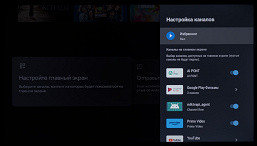
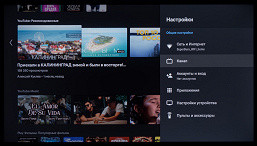
In the settings section of the home page, the user can configure the location of external blocks, activate or deactivate sections, disable advertising and add favorite applications for quick access.
The TV comes pre-installed with a sufficient number of applications, some of which have lost their relevance in the Russian Federation. But there is a certain RuTV Link, where you can quickly find all the necessary Russian software (Yandex browser, various streaming services and online cinemas).
In Google Play itself, there are not many officially available applications for the Android TV platform, but this practically does not limit the user, because the TV is able to digest all suitable APK installers. The main thing is that the power built into the TV is enough for the application you need.
The TV Manager built into the TV provides quick access to system cleaning, diagnostics and application installation functions. When you connect an external drive, the system automatically hides the notification, which can be opened through the built-in explorer with limited functions or used to record TV broadcasts using the PVR function.
Navigating the interface is easy and has nice animations. After all elements are fully loaded, the system operates quite quickly and smoothly, especially if you avoid frequent requests to various functions from the remote control and do not try to carry out many operations in a short time. However, if this happens, applications may freeze and crash. In this case, it is recommended to reboot the system and avoid overloading Android TV in the future.
Basic system settings
The main section of the system settings is presented in a familiar form, typical for all devices with the Android operating system. The settings have a wide range of options, including image settings. These are accessible through the settings menu, which can be accessed from the home page, as well as through a context menu with colored tiles that can be opened while watching TV channels or other video sources, including a PC.
Image settings are saved for all applications at once and for each of the external inputs, including the TV tuner, separately, plus settings for the HDR signal.
On the main OSD (On-Screen Display) screen, icons and blocks with settings are quite large, and the inscriptions are easy to read. The interface is Russified by default, and the translation is done with high quality. However, there are no prompts for operating parameters, which are usually present in devices with other operating systems.
The system has an extensive set of settings related to wireless connection. You can also set up a VPN connection directly from the operating system, without the need to use third-party applications. The user has the ability to block access for various applications and general control of all processes.
When connecting to a PC/laptop, it is recommended to activate the appropriate mode (PC mode) to reduce excessive saturation, normalize the level of signal compression and reduce excessive sharpening (it is best to immediately manually set it to zero for all sources and modes).
The contents of the context menu may vary depending on the image source, the format of the content being played, and the available HDR metadata. In some cases, some settings related to color rendering and image quality may not be available to the user. Also, enabling some features may limit the operation of others, making them unavailable (blocked). However, on the Android TV platform, such restrictions are less common than on other platforms.
Testing
Hardware platform and multimedia content playback capabilities
After installing the AIDA64 information application via the downloaded APK file, we gained access to information on the hardware configuration of the TV in question:
The TV is equipped with a typical budget hardware platform that is often used in many similar TV models and separately purchased HDMI set-top boxes. It features 1GB of RAM, a simplified graphics engine and half the storage capacity of Hyundai's 4K models. To reduce the load on the system, the operating system is displayed in a resolution of 1280x720.
The TV is switched to shallow sleep mode by briefly pressing the power button. It wakes up quite quickly — within 2-3 seconds, but additional time is required to fully activate the wireless module and update the graphical interface elements.
A long press on the power button or a power outage puts the TV into deep sleep mode. When turned on from this mode, the system restarts, which takes more time — about 40-45 seconds until the interface is fully loaded and the operating speed is normalized.
During testing, it was discovered that the TV fully supports USB drives with FAT32 and NTFS file systems, as well as files with Cyrillic names. The built-in player detects all files in folders, even if there are a large number of files on the disk. No additional utilities are required to support NTFS, which simplifies interaction with TV.
Built-in applications do not have a special level of functionality and ease of use, especially the standard Explorer. Therefore, the user can install and use their preferred third-party programs. For example, we installed Vimu Player and VLC for Android to play video files, and Solid Explorer to manage the file system, network resources and other functions.
For our media playback testing, we focused on a set of files primarily run from external USB drives, such as a 64GB USB 3.2 Gen1 flash drive and a 512GB USB 3.2 Gen1 SSD. Also, a DLNA server was used as a source of multimedia content, deployed using a Keenetic Giga (KN-1011) wireless router with firmware version 4.07 and a high-speed solid-state drive connected to the USB 3.0 port.
Testing the playback of audio files using the built-in player does not make much sense, given the availability of third-party programs that do a better job of this task and provide greater comfort for the user. However, it is worth remembering the modest hardware capabilities of the platform used and the matrix resolution. For example, playing 4K UHD content directly from the device is not only unnecessary, but can also cause problems such as system freezes or black screens.
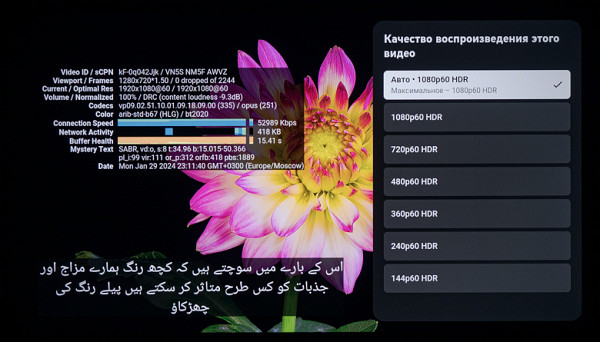
When testing the playback of multimedia content, we paid attention to various aspects of the operation of both the built-in player and third-party applications. It is noted that all applications, including the operating system, display a static image in a resolution of 1280x720, which is noticeable visually and is confirmed by data from AIDA64. However, when using hardware decoding, video playback in true 1920x1080 resolution is possible.
When testing video file playback, VLC and Vimu players were mainly used. It is noted that most modern high-resolution files (in this case, Full HD) are played back without problems, including H.265 options at 60 frames per second. Support for playback of HDR video files (HDR10 and HLG) and 10-bit-per-color files is also confirmed, providing higher image quality.
An important point is the TV's ability to adjust the screen refresh rate to the frame rate in the video file, but only by 50 or 60 Hz. This may cause frame durations to alternate between 24 frames per second files.
The maximum bitrate of video files, at which artifacts and video interruptions were not observed, was 90 Mbit/s when playing from USB drives, Wi-Fi and a wired Ethernet network.
In terms of image playback, the TV's built-in player has been confirmed to display raster graphics files in a variety of formats, including JPEG, GIF, PNG and BMP, including as slideshows.
TV tuner and PVR
This model, in addition to the satellite tuner, is equipped with a tuner that receives analog and digital signals from broadcast and cable broadcasts.
Strictly speaking, the TV does not have advanced features to improve image quality, so the picture on standard definition channels looks extremely unsatisfactory. For a pleasant user experience, we strongly recommend choosing High Definition (HD) channels.
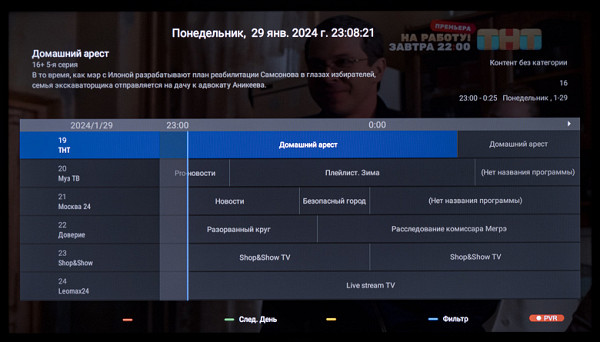
With the correct basic setup (selecting the appropriate operator that provides the connection source), a complete search for programs takes no more than a minute — it's really fast. After this, the TV is completely ready to watch TV programs.
The TV has basic support for an electronic TV guide — you can see what is on or will be on the current and other channels, as well as get acquainted with a brief description of the program, which can be displayed on a third of the screen area.
Quick access to watching TV programs can be achieved using a special button on the remote control or by going to the appropriate section in the OS interface. All found cable channels (both analogue and digital) are displayed in a separate list without colored icons or pictograms. The ability to filter channels by their type is also available.
Hyundai TV comes with a scheduler-based TV recording feature known as PVR (or Personal Video Recorder), which also includes TimeShift feature. Setting up this feature can be a little complicated, but overall it works reliably. When you connect an external drive, the system quickly detects it and offers to use it for recording, creating a special folder for saving files.
Acoustic system
The TV's built-in speaker system is built according to a classic 2.0 stereo scheme — without a dedicated low-frequency speaker (subwoofer).
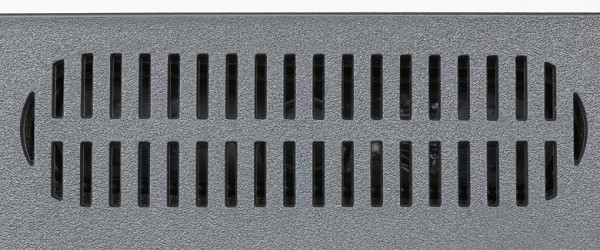
The sound settings menu is available in any program and anywhere in the system.
Work with video sources, HDR support
By connecting the TV to the computer via HDMI, we received an image output in a resolution of 1920x1080 at a frame rate of up to 60 Hz. The TV automatically adjusts the screen refresh rate to 50 or 60 Hz, but with a 24 fps signal, frames continue to be output with a 2:3 alternating duration.
The video noise reduction function shows good results without causing noticeable artifacts in dynamic images.
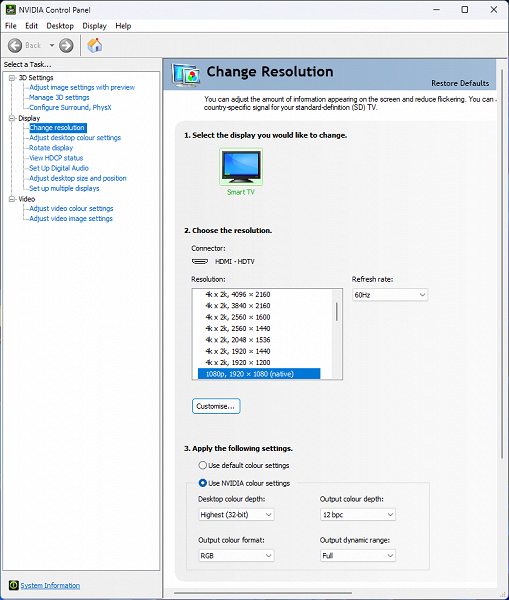
Under Windows 11, HDR output to this TV is possible by configuring the appropriate options in the display menu. With FHD resolution and a refresh rate of 50/60 Hz, output is carried out in 8-12 bits per color mode (the choice is available to the user). With 10-12-bit output, partial confounding (FRC) is likely coming from the TV itself.
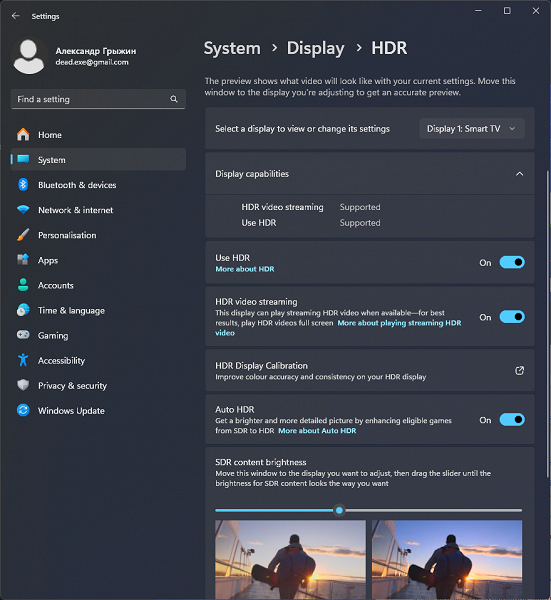
Playing test videos with 10-bit color and smooth gradients showed that the visibility of transitions between shades was significantly reduced compared to simple 8-bit output without HDR. Colors in HDR content appear more saturated, as expected. However, there is no full support for extended dynamic range on the TV side due to limited brightness and color gamut at the level of standard sRGB.
It should also be noted that the maximum brightness in HDR mode remains the same as in SDR mode, and the color gamut does not change, remaining at the original level (we will discuss this in detail in the corresponding section below). However, HDR support is present, which can be easily confirmed by switching the HDR mode in videos with integrated HDR metadata. Above are examples of such videos in HDR10 and HLG formats.

It is worth noting that in the “Display Information” section and in the information block of the VESA DisplayHDR Test utility it is noted that the TV does not convey full information about its capabilities for working with HDR content. Peak brightness data may vary depending on picture settings and possibly other processes occurring when connecting the PC to the TV. We observed maximum brightness data of both 1499 nits and 80 nits.
Microphotographs of the matrix
The microphotographs show the subpixel structure characteristic of a *VA matrix.
Each of the subpixels, presented in three colors (red, green and blue), is divided into two parts. Each of these parts, in turn, is divided into four sections with different domain orientations. Such a complex device, in theory, provides a wide dynamic range in the number of shades and good viewing angles, thanks to variations in the orientation of the LCD in the domains.
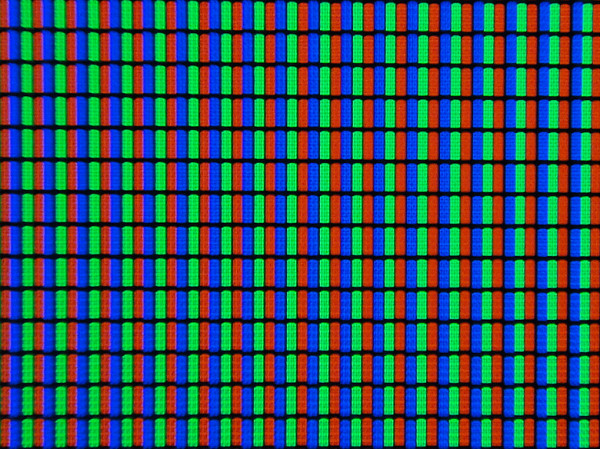
But this is a theory, in practice, all domains, when displaying gray fields of various shades, work in one connection — simultaneously changing their orientation in space.
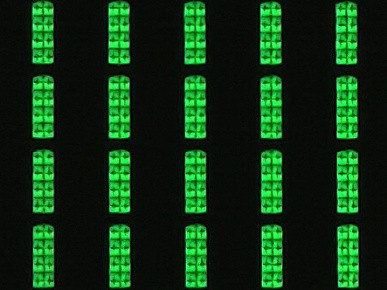

Focusing on the surface of the screen revealed chaotically located surface microdefects responsible for the anti-glare properties, with which the Hyundai TV has a “strained relationship.”
As a result of this, the crystalline effect usually present in liquid crystal displays is practically absent, and the screen is visually pleasing with a contrasting and rich picture. The image sharpness is sufficient (or even excessive in the case of factory settings), and there are no problems with the output of fine lines and text fields, but this is only true within the limits of the matrix resolution used.
Uniformity of illumination across the screen field and operation of local control zones
Brightness measurements were taken at 35 screen points placed at intervals of 1/6 of the screen width and height. Screen edges are not included in measurements. The settings were set to have a white field brightness of 100 nits in the center area of the screen.
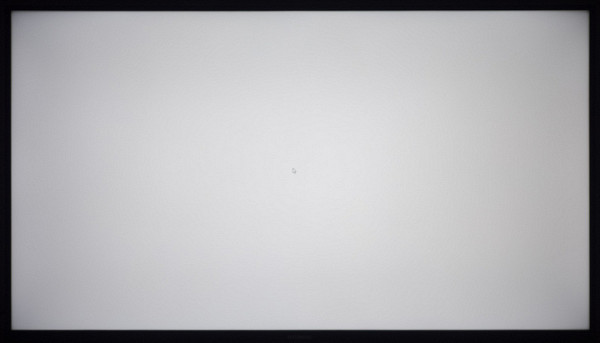
On a white background, the typical unevenness of the backlight is noticeable, which is expected for a TV of this class and price range. However, it should be noted that the result turned out to be very worthy, since no real defects related to the heterogeneity of the working area of the Hyundai TV were identified.
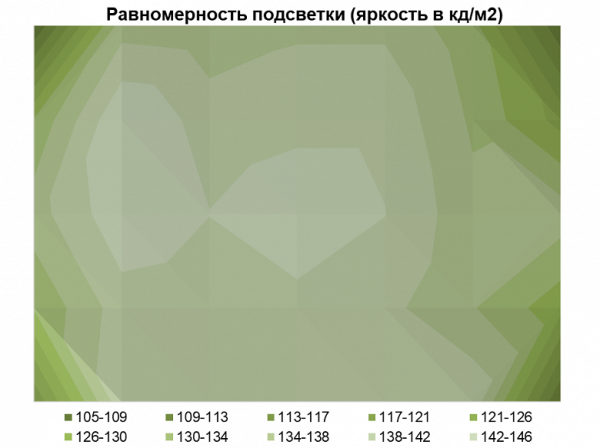
The average brightness deviation from the central point was 6.8%, and the maximum reached 27.1%. Compared to the results of many computer monitors with smaller screens, the Hyundai TV's results can be considered good, especially considering the large area with high measured brightness values.
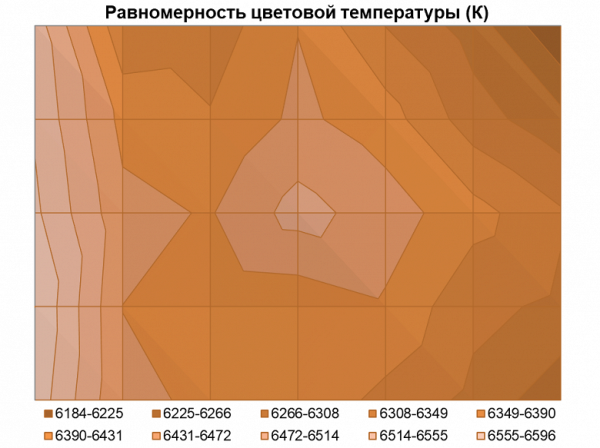
We were pleasantly surprised by the uniformity of color temperature, which is quite rare: the average deviation from the center point was only 1.6%, and the maximum was 4.7%. The operating color temperature range turned out to be close to 400 K, and the only problem areas, from our point of view, were in the two corners of the right side of the panel. For a 40-inch TV, this is an excellent result.
If you pay attention to the unevenness in the transition to darker gray shades and their display across the entire area of the TV screen, then all the features of the backlight become more distinguishable. However, given the experience with similar models and devices with a high price, it is worth noting again that the Hyundai H-LED40BS5002 performed very well.
Response speed, output latency and PWM modulation
Black-to-white-to-black (BtW-WtB) response time is 69 ms (52.4 ms on + 16.6 ms off). Transitions between semitones (GtG) take an average of 16 ms. The manufacturer has used a medium level of matrix overclocking, which can lead to visible artifacts on some transitions.
From the point of view of gaming experience, this matrix speed is sufficient for playing not very dynamic games. However, it would be desirable to see a more responsive (fast) matrix, especially for a *VA screen.
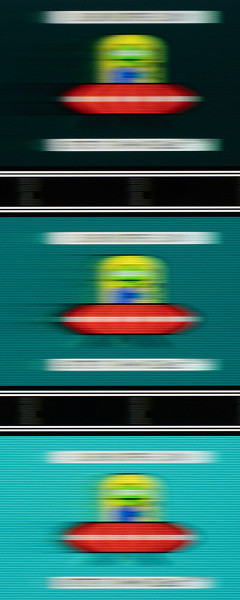
Visual representation of response speed (Test-UFO)
For a visual representation of the impact of such a matrix speed and possible artifacts from overclocking, the above picture is presented, taken using a moving camera. Pictures like these illustrate the effects a person observes when he follows a moving object on the screen with his eyes.
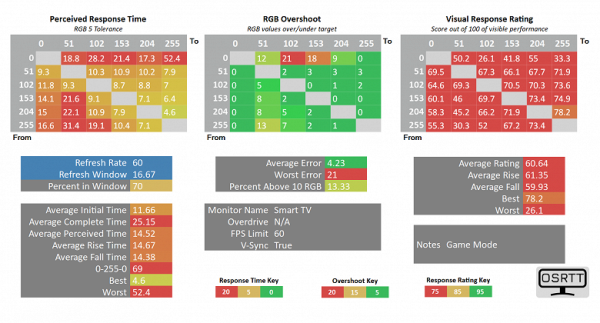
Response time, artifact level, visual speed rating
The above measurement results used the OSRTT hardware and software system. An RGB tolerance of 5 was selected as the reference method for evaluating response speed after normalizing the gamma value through automatic evaluation of the factory value. This speed rating option sets a more stringent standard than typical manufacturer measurement techniques (10%-90% transition time, not accounting for gamma differences).
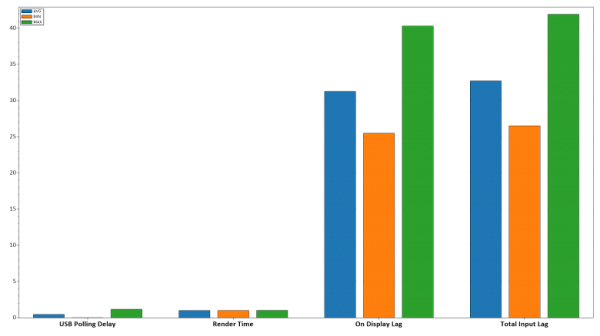
Output Latencies (ms)
We also measured the total output latency from the moment the video buffer page switches until the image begins to display on the screen. When connected via HDMI, the image output delay with a signal of 1920x1080 and 60 Hz was about 31.5 ms (with Game Mode activated). This delay probably won't be noticeable when using the TV as a monitor for computer work, but can be significant for fast-paced games. Disabling Game Mode resulted in a slight increase in latency to 34ms. Based on this, we can conclude that the failure to activate “Game Mode” will not lead to serious consequences.

Ripple level at 0% brightness
At all brightness levels, we did not detect significant backlight modulation, which eliminates screen flickering (PWM modulation, as many consumers understand it). According to the Radex Lupin device, ripples do not exceed 0.4% -0.5%, depending on the brightness level of the TV backlight. This result differs from the typical performance of devices in this price segment and modern TV models in general. In addition to this, a screenshot of the white field measurement results at a minimum backlight brightness of 0% using the OSRTT device is presented, confirming the absence of PWM modulation.
Viewing angles, image stability and Glow effect
The Hyundai TV is equipped with a *VA matrix, which affects its image stability across the entire screen area and may degrade viewing angles compared to some analogues using an IPS matrix. However, when viewing from one point, especially if there are no more than three viewers, this difference may not be noticeable.

There is a relatively smooth decrease in brightness when deviating from the perpendicular to the screen in various directions with a wide range of angles, but there is a sharper brightening of dark areas of the image compared to the IPS matrix. In some cases, a pasteurization effect occurs at complex transitions, and weak parasitic shades are also observed. When viewed at an angle, the white color may darken and take on a metallic tint.
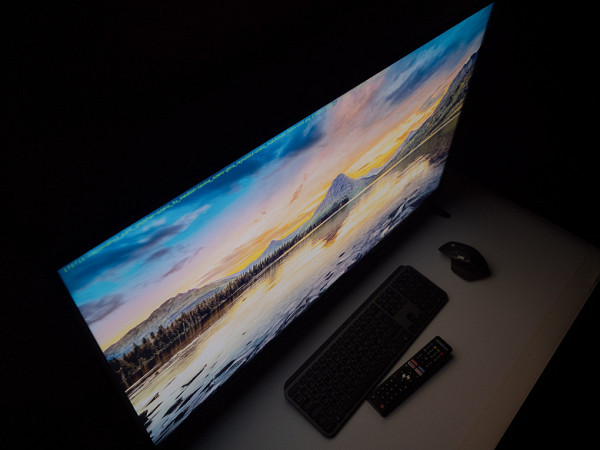
When tilted diagonally, the brightness of the black field increases sharply when deviating by 20°-30° from the perpendicular to the screen. This causes the image's color balance to change, making it less saturated.
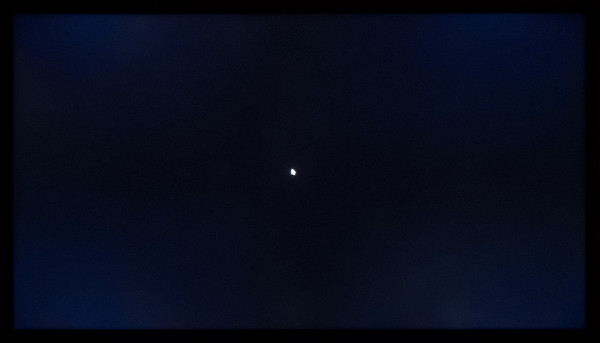
If you sit close to the screen, then the black field in the corners is somewhat lighter than in the center, but usually this cannot be seen, since at a distance of 2-3 meters from the screen this visual feature disappears.
When the view deviates from the normal, we observe the classic phenomenon of black field brightening, even on a fairly high-quality *VA panel with a static contrast ratio of about 5500:1. Nothing new or surprising, everything is as usual.
conclusions
The Hyundai H-LED40BS5002 TV is the base model for entering the world of Smart TV. Thanks to the Android TV operating system, you have fewer restrictions and more freedom to use. You will get a quality VA panel with deep blacks and even illumination. Despite the relatively low price (20-25 thousand rubles, excluding discounts), the Full HD matrix, after correct configuration, will provide excellent image quality, especially when viewed from a distance of at least one and a half meters.
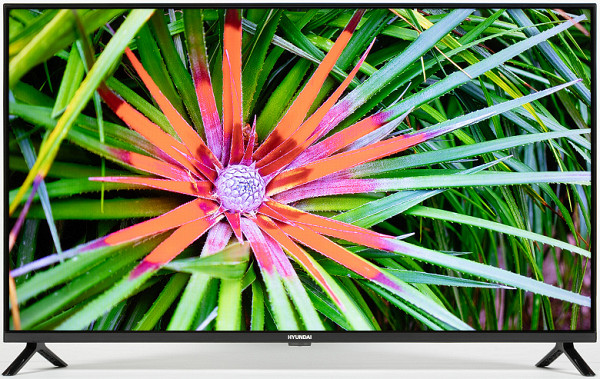
The Hyundai H-LED40BS5002 exceeded expectations, delivering higher brightness and contrast performance than stated in the specifications — which was a pleasant surprise. I was also impressed by the variety of color settings available, surpassing the capabilities of many more expensive models. At the same time, it should be noted that to achieve optimal color reproduction, some settings may require correction.
The TV is free of backlight flicker throughout the entire brightness range, and the uniformity of the backlight leaves a pleasant impression of brightness and color temperature. To reduce eye strain, CT modes or Low Blue Light mode are also available, which, of course, can slightly reduce the maximum brightness and black depth, but will still maintain the correct color characteristics.
Among the additional advantages, it is worth noting the PVR broadcast recording function and full support for drives with the NTFS file system without file size restrictions after the latest software update. This makes the Hyundai H-LED40BS5002 TV even more attractive in the eyes of consumers.
Advantages:
- Android TV platform based on Android 11 with extensive customization options
- Support for HDR content (in HDR10 and HLG formats) — but this is only formal support due to limitations in the color gamut and maximum brightness of the model
- Hybrid remote control works via Bluetooth and IR
- Dual-band Wi-Fi module with high connection speed
- Google Chromecast support for wireless data transfer
- Good quality of reception of digital terrestrial TV programs and the presence of the PVR function (recording TV programs on a connected storage device)
- Seamless work with FAT32 and NTFS file systems (support added in the latest firmware)
- Good color quality after manual adjustment
- Decent uniformity of illumination in terms of color temperature and absence of uniformity defects (various vertical and horizontal stripes)
- Excellent multimedia capabilities
- No backlight flickering (Flicker-Free, no PWM)
- Official delivery (full localization) and manufacturer's warranty
Flaws:
- Variation of frame duration in case of signal or files with 24 fps
- The shell freezes and/or a noticeable decrease in speed after some time of operation — it is advisable to reboot the TV more often
- Relatively high minimum brightness (104-126 cd/m² depending on the CT settings — 6500 and 9500 K, respectively)

